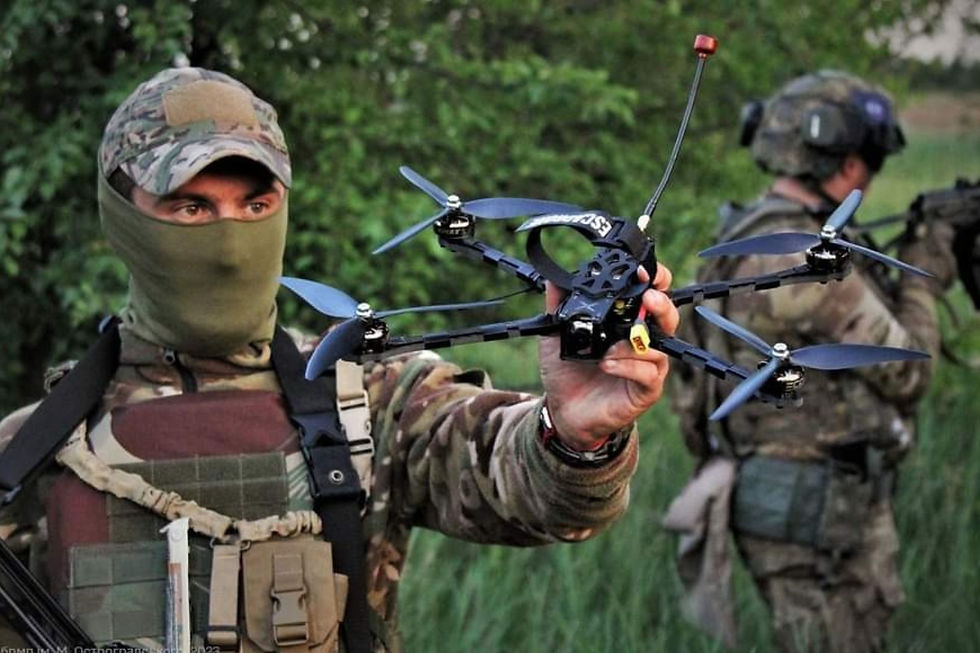The U.S. Drone Imperative: Breaking Bureaucracy and Building Tactical Excellence
- Patrick Moltrup
- Aug 10
- 2 min read
The drone revolution is transforming modern warfare. Conflicts from Ukraine to the Pacific highlight a pivotal truth: cheap, ubiquitous unmanned systems are rewriting the combat playbook. The Pentagon’s newly issued memo, “Unleashing U.S. Military Drone Dominance,” signals a decisive shift toward low-cost, field-driven innovation.
Ditching Red Tape, Fast-Tracking Lethality
On July 10, Defense Secretary Pete Hegseth declared that long-held restrictions will be lifted to reinvigorate drone procurement, empower domestic manufacturing, and embed UAS across combat training Business Insider+6National Guard Association+6DefenseScoop+6. The message is clear: bureaucratic hesitation is no longer an option.
Enter Fulmen Defense. With instructor‑led, combat‑driven training in GPS‑denied and electronic warfare environments, we’re aligned with this new doctrine. Our 3- and 4-man drone teams are the tactical embodiment of the Pentagon’s call for field‑ready, low-cost lethal systems.
A Drone Army in Every Division
The U.S. Army drone imperative is pivoting aggressively—from 90% manned to intended drone-heavy formations. Each division is slated to field roughly 1,000 drones as part of a $36 billion modernization push The TimesDefense DailyBusiness Insider+1. But fielding volume alone isn’t enough. Real battlefield effectiveness comes from coordination, training, resilience under adversarial conditions, and rapid adaptability.
That’s precisely where Fulmen Defense fits in—by delivering practical, team-based training that forges lethal drone units capable of operating in contested environments and defeating both kinetic and drone threats.
The Challenge: Scale Meets Complexity
Despite the intensity of the drone arms race, real-world deployments—like the U.S. Army’s drone efforts in Germany—continue to expose friction points: GPS failures, lost video feeds, equipment breakdowns, and environmental complications Business Insider.
Through live-fire training and modular aircraft systems, Fulmen Defense helps bridge that gap—teaching teams to anticipate, troubleshoot, and adapt on the go, fostering operational ruggedness when it matters most.
Why the Drone Frontier Demands Specialized Training
Traditional procurement models can’t keep pace with drone tech evolution. Too often, systems arrive late and miss the battlefield relevance. That’s why the pressure is on for units to train with lethal, mission-tailored drone tactics rather than generic piloting skills.
Fulmen Defense answers that call, focusing not on building individual pilots—but on crafting cohesive, lethal combat teams. Whether employing kinetic FPV drones, loitering munitions, or counter-drone tactics, our training is mission-specific, immediate, and adversary-focused.

Conclusion: The Future Is Now—Train at Pace
The U.S. military’s latest directives signal a clear demand: accelerate drone dominance with agile procurement and operational readiness. Fulmen
Defense is uniquely positioned to support this shift by preparing lethal, cohesive drone teams ready for GPS-denied, EW-saturated battlefields.
As the drone arms race heats up, success won’t come from hardware alone—it will come from how teams train, adapt, and execute under pressure. And that’s exactly what we build.

Comments